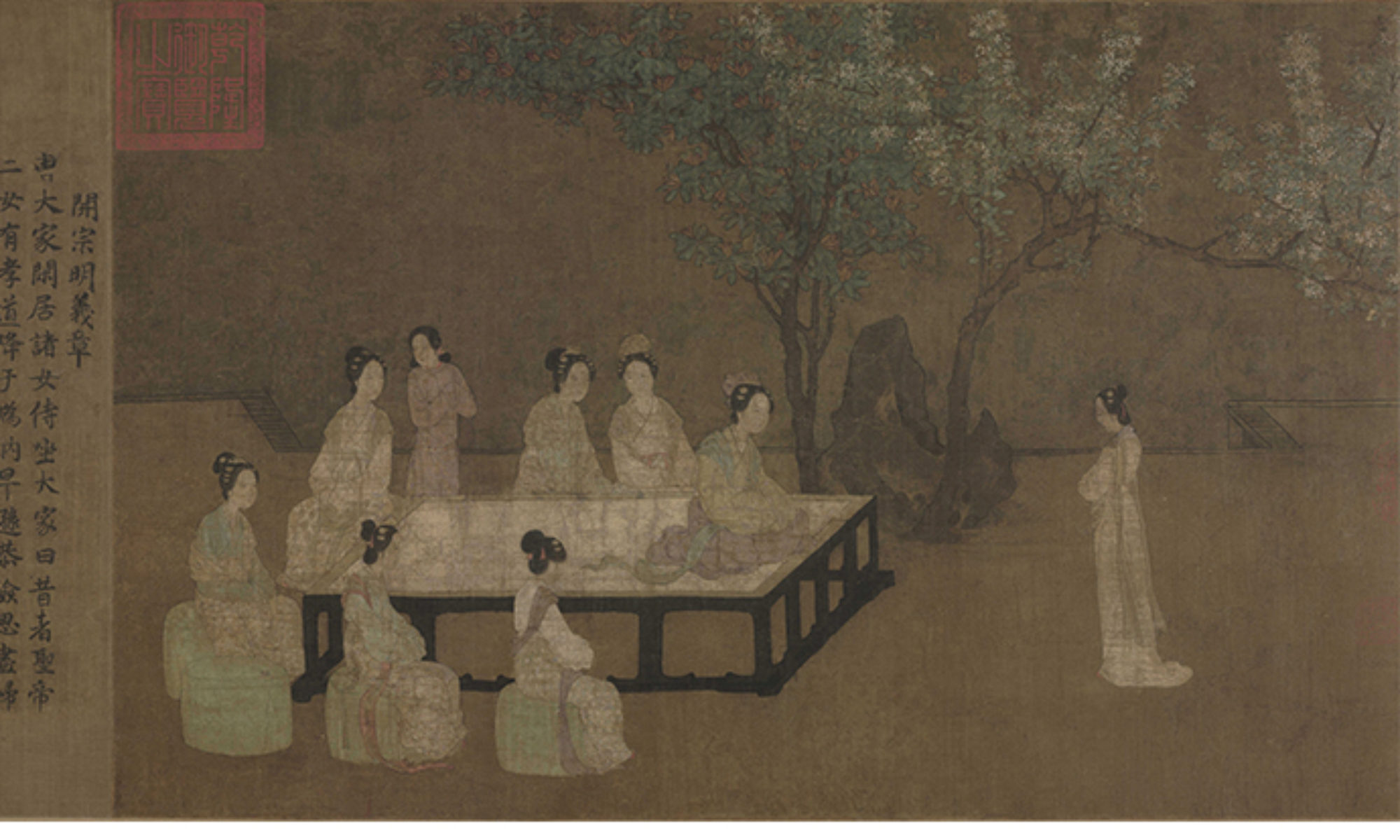“Female filial piety” refers to the respect, devotion and care that women give to their parents, husband, and elders in the family, a notion regarded as a cornerstone that ensures the longevity of a Confucian social order based on an ideal gender division of “men till, women weaving.” In other words, the stability of the community is maintained at the expense of women’s domesticity and selflessness. This discourse has gone largely unquestioned in China until the early twentieth century, when the modernists of the May Fourth movement overhauled traditions they deemed unenlightened or incompatible with modern, Western values. Liberating women from mental and physical confinement, (particularly the notorious tradition of foot binding) became a major call of this movement. After the establishment of People’s Republic of China in 1949, women’s filial piety was further degraded to the feudal stereotype, as the traditional female virtues were against the socialist ideology. Under the small-scale peasant mode of production, women made important but unacknowledged contribution to the household economy, whereas, women’s emancipation depended on their contribution of productivity to the nation-building project in the socialist era. The promotion of “equal half” concealed the female filial piety beneath the women’s proletarian work clothes and the official ideology of gender equality.
Today’s conventional representation of Chinese women’s role characterizes women primarily as passive recipients or victims of patriarchal ideology. The May Fourth movement dominated by male intellectuals promoted the advancement of women. Co-educational schools were established to free women from the shackles of traditional Confucian ethics through western education. At the same time, this movement brought women into political and social revolution. Furthermore, in socialist artworks, women were depicted as oppressed working-class sisters awaiting communist emancipation, then participated in production with the absence of sexual features. Whereas, this concept of gender connoted collective sameness more than sexual difference.[1] The slogan of eliminating feudal female virtue signified propagating western value and socialist political ideology in modern and contemporary China. In turn, people accustomed to viewing female virtue only from an anti-oppression perspective with stagnant eyes. In addition to the oppression brought by female morality, it has indeed helped women in the past. Reviewing the expectation of female morality, this notion of patriarchy provided a method to empower the bride in her new family and achieve female self-advancement and their social prestige. Hence it is not subjective to completely deny the value of female filial piety in the end.
Situated against women’s suppression discourse, this project is based on the neutral perspective by dismissing the modern bias and moralistic tones that conduct our present knowledge of women’s filial piety. This website, the first English site of its kind, aims to re-embed female morality in the specific social context and didactic paintings to see what agendas they served, to explore the significance of female morality in particular social, religious, and cultural circumstance. After visiting this website, visitors are expected to recognize how female morality was conveyed or affirmed in the visual medium.
Building on these scholarships, this website explores the Confucian female morality by examining how Confucian morality shaped women’s space and the depiction of model women during the Song Dynasty (960-1279 CE) in the twelfth-century painting Ladies’ Classic of Filial Piety Scroll housed in the Palace Museum. It is a long handscroll of [43.8*823.7cm] that transcribed and illustrated several chapters of the text Ladies’ Classic of Filial Piety. This exquisite ancient handscroll has caught scholarly attention to decipher its authorship, authenticity and image-text relationship. Here, we focus on the untold stories of women’s daily life represented in this painting to unveil the complex relationship between female agency and Confucianism in medieval China.
This website is divided into five themes: Writing and Picturing the Ladies’ Classics of Filial Piety, Women’s Space, Women’s Work, Women’s Morality, and Model Women. The first part introduces the historiography of the Ladies’ Classics of Filial Piety and the paintings based on the text. The twelfth-century version in the Palace Museum, Beijing will be our prime example. “Women’s Space” begins by introducing the notion of “the separation of men and women” in Confucian literature and then displays the visual representation of women’s spaces in the scroll to highlight the spatial relationship between figures, furniture, objects as well as the interaction among female figures. This observation is essential to the understanding of what the domestic space women occupied looked like. “Women’s Work,” on the other hand, discusses the activities taken place in women’s spaces, emphasizing domestic affairs of gentry women and court ladies, who were under Confucian scrutiny the most. The depiction of women’s spinning and weaving activities and serving their parents-in-law particularly demonstrates the economic and moral value behind women’s work and added spices of political propaganda to this painting.
“Women’s Morality” explores wives’ duties and virtues in terms of ancestral rituals, motherhood, serving husband, and managing other family women and servants. A comparison with The Tales of Virtuous Empresses of Past Dynasties Scroll painted by the early eighteenth-century court painter Jiao Bingzhen in reveals the distinct features of the twelfth-century handscroll. It not only depicts inner spaces, women’s work and virtues but also represents well-known historic women as the intellectual and moral models to promote their morality. The last part, “Model Women,” draws attention to personal stories of Ban Zhao (ca.45-117) and Fan Ji (ca.7th-6th BCE) to discuss the perfect female virtues in the Confucian discourse.
[1] Cui, Shuqin. “The (In)visibility of the Female Body in an Art Tradition: A Historical Framework,” Gendered Bodies: Towards a Women’s Visual Art in Contemporary China (Honolulu: Hawaii University Press, 2016), 23-25.
